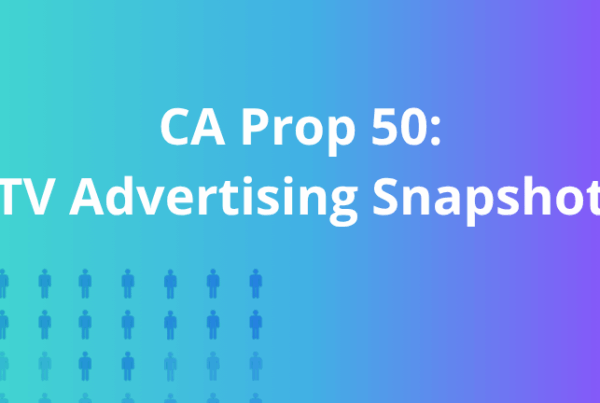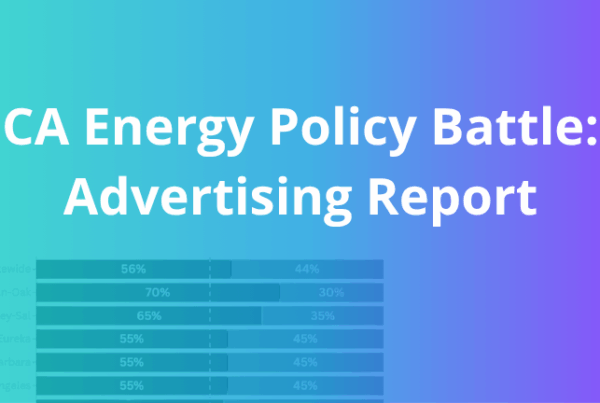Earlier this year, we looked at the linear TV performance of all 2024 Presidential advertisers in the state of Georgia. Reminder: We found that linear TV largely under-delivered to high turnout swing voters compared to other groups in the electorate.
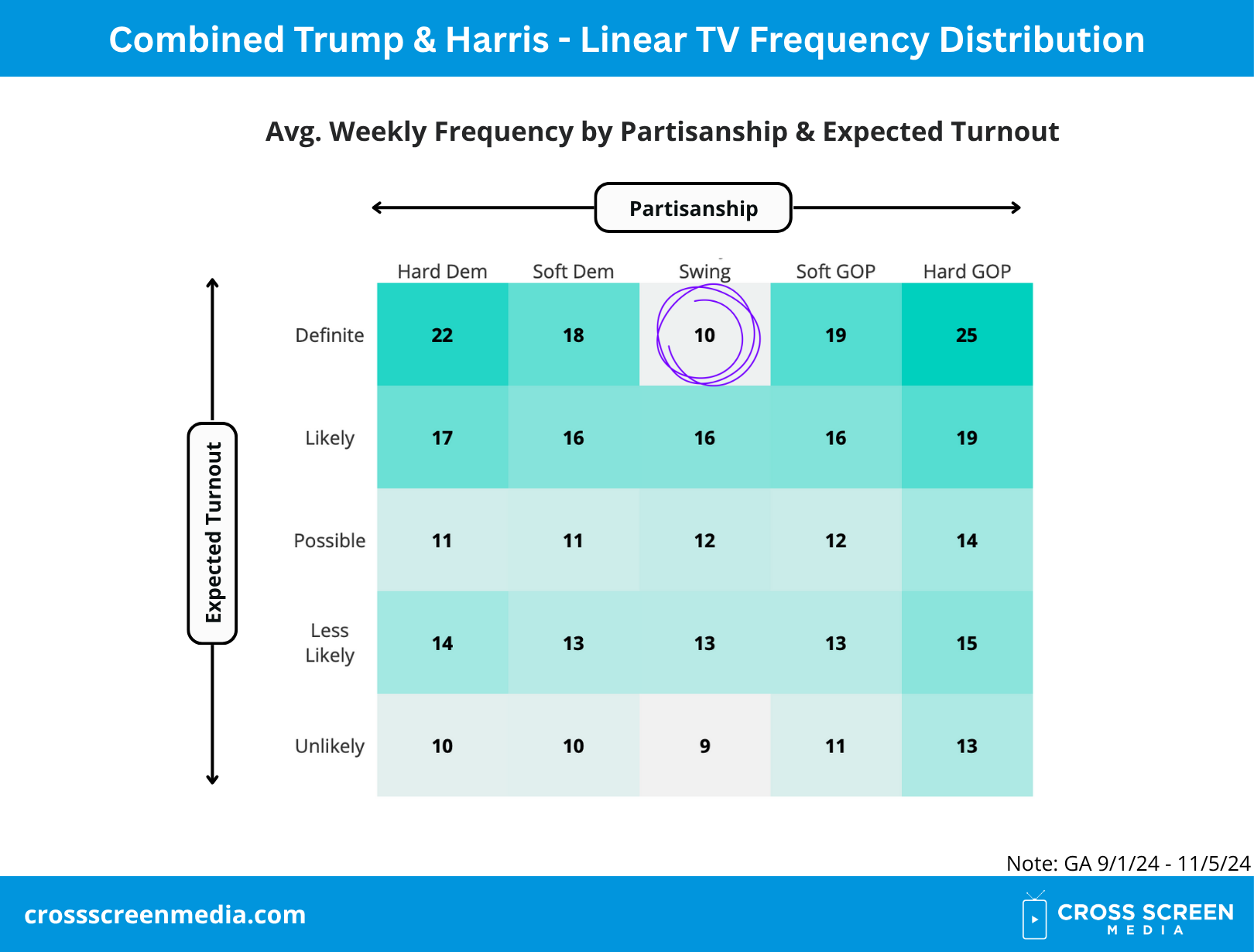
A Common Question Followed:
Was this just a reflection of each campaign reaching their partisan base — Trump reaching Republicans, Harris reaching Democrats?
We investigated.
Were Trump and Harris buying different TV schedules?
Quick Answer: Yes
The Trump campaign bought more heavily on conventionally Republican-leaning networks: Fox News, ESPN, Hallmark, Lifetime. While the Harris campaign bought more heavily on what are traditionally Democrat-leaning networks: MSNBC and CNN.
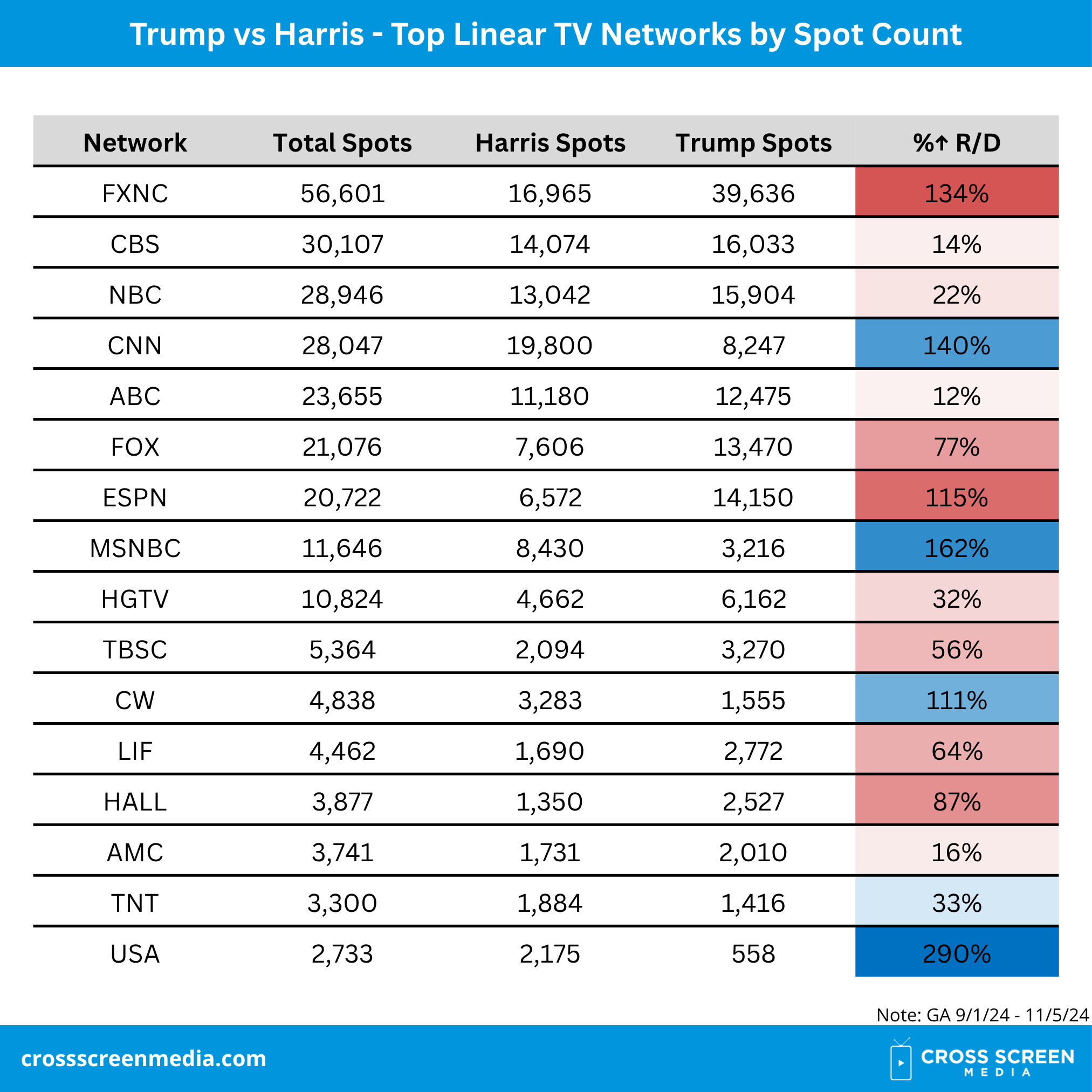
Did that change the overall frequency distribution?
Quick Answer: No
Despite the different TV schedules, the frequency distribution looks very similar from one campaign to the other. Although specific programs and networks over-index to one party, looking at the totality of the TV buys shows that Republicans and Democrats were reached pretty evenly.
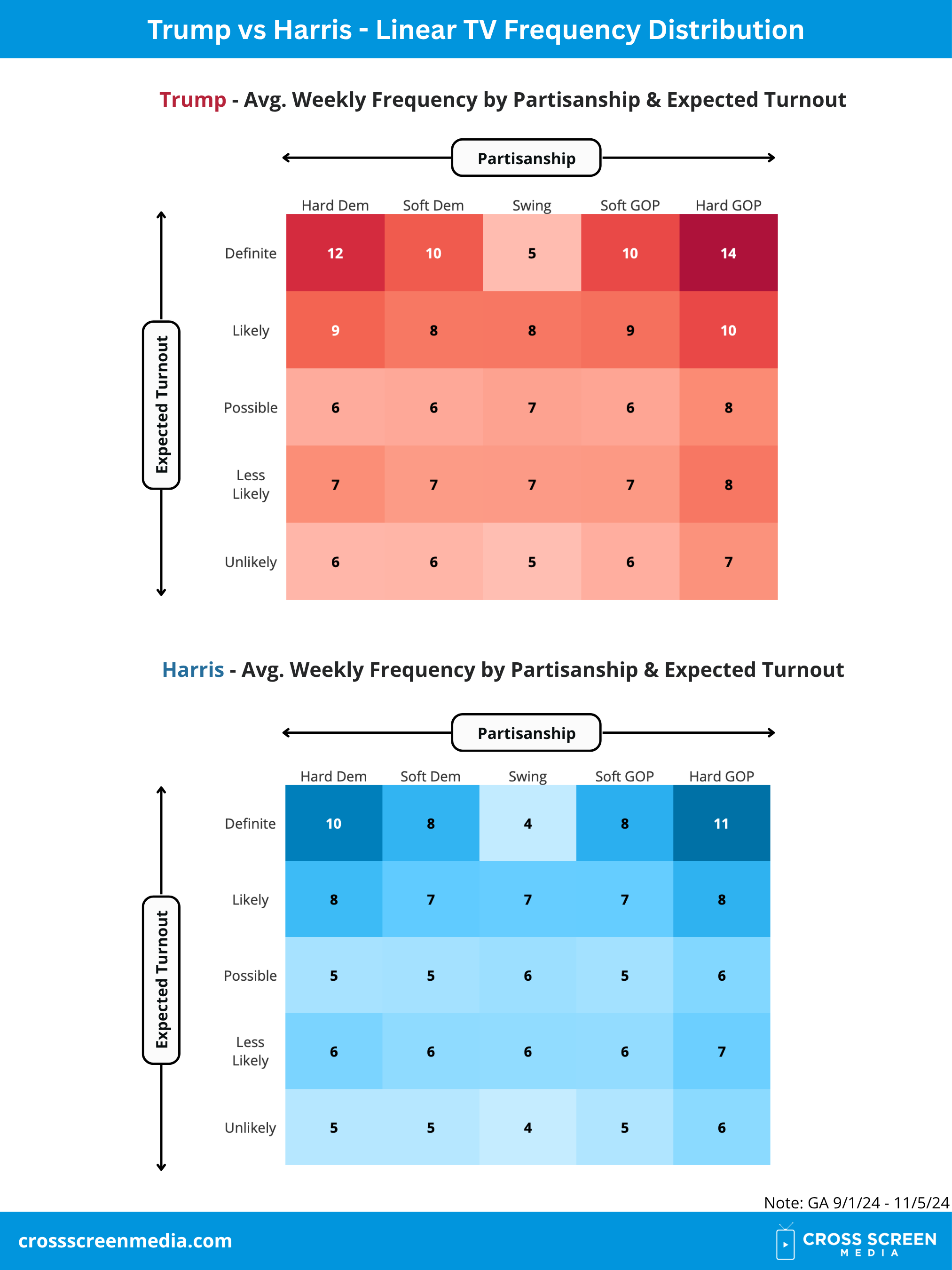
What does this mean?
While data-driven linear buying provides targeting efficiency at the program and network level, its effectiveness is likely washed out at the scale of a presidential or fully funded statewide campaign. The most effective way to reach specific voter segments on the big screen is through targeted streaming advertising.
Please reach out if you’d like to discuss this further!


